Financial management software helps companies get visibility into their assets, income, and expenses to automate, streamline, and manage their daily finance management workflows. It digitizes repetitive and manual tasks across the five key areas:
- Automate data entry to reduce accounting errors.
- Shorten invoice payment cycles.
- Improve cash flow management processes.
- Comply with regulations across taxes and operations within your industry.
- Forecast using financial models to optimize cash flow and identify cost-cutting measures.
If you’re still relying on spreadsheets, you likely waste hours hunting for a single error that wrecks your budgeting, the accounting team manually updates financial models to match new tax reforms, or the support team spends valuable time chasing unpaid invoices.
That’s the problem with manual processes—they make you spend time on repetitive tasks that software takes minutes to perform, while it will do so instantaneously and even 24/7. Your finance teams can productively spend these valuable hours on strategic tasks like identifying tax-saving opportunities or solutions to overspending trends.
Geekflare has tested the best financial management software options for small businesses, startups, and large enterprises based on features, pros, cons, and pricing to find the perfect fit.
- Bonsai – Best for Freelancers Finance Management
- Quicken – Best for Micro Business
- Xero – Best for Small Business Accounting
- BILL.com – Best to Manage AP, AR, and Expense
- Sage Intacct – Advanced Accounting for Enterprise
- NetSuite ERP – Best ERP Solution for Global Enterprise
- Certinia (FinancialForce) – Best for Salesforce Users
- Workday – Best for Financial Planning
- Acumatica – Cloud ERP Solution
- AccountsIQ – Best for Multi-Entity Accounting
- Expensify – Best for Expense Management
- Tipalti – Best for Accounts Payable Automation
- Causal – Offer Financial Forecasting and Scenario Planning
- Show less
You can trust Geekflare
At Geekflare, trust and transparency are paramount. Our team of experts, with over 185 years of combined experience in business and technology, tests and reviews software, ensuring our ratings and awards are unbiased and reliable. Learn how we test.

Bonsai
Best for Freelancers Finance Management
- Core FunctionalityGeneral Accounting
- AI-PoweredNo
About Bonsai
Bonsai’s financial management software focuses on solopreneurs like freelancers and small and medium businesses (SMBs). It removes the burden of managing clients, finances, and projects in a single platform—a big relief for freelancers and SMBs. This includes budgeting tools, business accounting, expense tracking, and personal finances.
Bonsai is suitable for service-based SMBs and freelancers. It provides features like expense tracking, reporting, budget management, etc., to streamline financial operations at a price point that doesn’t overwhelm a small business.
Bonsai Features
Budget management: Set and achieve business financial goals using insights from budget and profitability reports. Includes niche features for SMBs like setting up recurring retainers and tracking billable or non-billable hours.
Invoice management: Create and automate branded invoices to set up recurring billing, subscription invoices, late fees, etc.
Collect payments: Include digital payment options within invoices and send automated payment reminders for improved cash flow.
Expense tracking: Streamline bookkeeping by digitizing expense tracking. It automatically reports profits and determines tax estimates to improve business accounting efficiency.
Financial reports: Generate real-time financial statements and reports on client or project profitability, activity, billable hours utilization, and more.
Bonsai Pros/Cons
Allows logging partial payments.
Pricing is suitable for solopreneurs and small businesses.
Provides customizable templates covering comprehensive financial management requirements.
Inclusion of task management features improves productivity for financial planning.
Delays in setting up Bonsai payments due to lengthy credit card verification process. Users also report slow payouts for initial transactions.
Inadequate native automation options – you have to use third-party tools.

Quicken
Best for Micro Business
- Core FunctionalityGeneral Accounting
- AI-PoweredNo
About Quicken
Quicken offers financial management tools for small businesses, rental property management, and personal finances. It provides real-time insights into your spending, loans, savings, net worth, investments, and retirement accounts. It is supported by direct sync with 14,000+ financial institutions for easy expense tracking, tax report generation, bill payments, and more.
The New York Times’ Wirecutter’ has awarded Quicken the ‘Best Budgeting Software’, making it suitable for effective budget management and personal finance requirements.
Quicken Features
Achieve financial goals: Decide monthly saving goals, align your expenses accordingly, and track them to meet the targets.
Manage debts: Use ‘What-If’ scenario tools to plan your debt payoff strategy and know timelines for executing it.
Manage investments: Centralize tracking of all investments, dividends, fees, cash flow, and more. Explore investment opportunities across stocks, bonds, crypto, etc. Includes analytics to optimize investments to minimize risks and maximize returns.
Plan retirement: Perform personalized financial planning for retirement by considering it in your budgeting, investment, and savings workflows.
Quicken for small businesses: Use the small business mode for budget and financial planning. You can generate reports to maximize tax deductions, manage invoices, track payments, and manage expense documentation.
Quicken Pros/Cons
Account reconciliation feature helps centralize and track transactions across banks, investments, credit cards, etc.
Cross-platform sync across Mobile, Web, Mac, and Windows apps.
Allows adding spending limits.
Dedicated real estate management features give a complete financial picture.
Users report Quicken releases frequent product updates and has a responsive customer support team.
Lacks inventory management features for businesses with inventory workflows.
Only tracks investments – inadequate features for in-depth portfolio management.
Users report a steep learning curve due to exhaustive features.
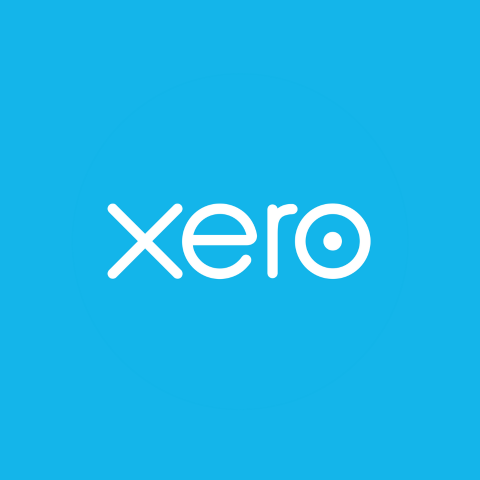
Xero
Best for Small Business Accounting
- Core FunctionalityGeneral Accounting
- AI-PoweredNo
About Xero
Xero provides dedicated financial management solutions for small business bookkeepers and accountants. You can sync your bank account, track expenses, and centralize invoices to simplify accounting and taxation workflows. With unique features like multi-currency accounting, bill payments, and inventory management, small businesses can seamlessly scale their accounting as they grow.
Xero App Store integrations, mobile apps, and accounting tools suit small businesses looking to streamline accounting workflows. It also provides financial management software for accounting bookkeeping professionals to manage clients and staff and ensure compliance with accounting standards. Check out our Xero review for full details.
Xero Features
Bank reconciliations: Automatically match bank transactions with invoices and expenses to save time and reduce errors in financial records.
Accounting dashboard: Track invoices, payments, bills, and accounting workflows in a centralized dashboard.
Financial reports: Generate customizable reports that provide insights into your business’s financial health. Allows collaboration and includes profit and loss statements with cash flow forecasts.
Invoices management: Create and send professional invoices quickly. Allows recurring billing and automated reminders to ensure timely payments.
Expense tracking: Upload receipts directly into the software to allow your employees to capture, categorize, and submit expenses.
Xero Pros/Cons
Provides exhaustive templates to speed up financial processes across invoicing, quotes, receipts, etc.
Capable mobile app for accessing key Xero accounting platform features.
Allows sharing of financial data with financial institutions for easy and streamlined loan application.
Includes inventory tracking and payroll management features, making it end-to-end small business finance management software.
Users report the software is not affordable for small businesses compared to other accounting software like QuickBooks, FreshBooks, and Zoho Books.
Users across review sites and forums report constant changes in features and prices that affect software’s usability.
Customer support is limited to email tickets and support articles.

BILL.com
Best to Manage AP, AR, and Expense
- Core FunctionalityAccounts Payable & Accounts Receivable
- AI-PoweredYes
About BILL
BILL offers a single financial management system to automate and streamline accounts payable (AP), accounts receivables (AR), expense tracking, reimbursements, payments, and spend management. Such integrated financial operations solutions allow businesses and accounting firms to automate financial processes. It also offers an ‘accountant console’ to digitize workflows and manage clients for accounting firms.
With features to set up roles and permissions, BILL is great for medium—to enterprise-sized businesses looking to gain thorough visibility into their financial operations.
BILL Features
Accounts Payable: Using two-way sync, you can centralize your bills and implement payment automation. BILL allows adding approval workflows for each payment for improved AP visibility.
Invoice management: Automate accounts receivable using customizable invoice templates and scheduling. BILL supports recurring invoices, tracks invoice status, and automates follow-up workflows.
Track payments: Users can easily make payments via virtual credit cards and ACH transfers, including international transactions. BILL tracks payments and manages cash flow through a streamlined interface aggregating all payment tasks.
Forecast cash flows: BILL provides a dashboard to track cash management metrics like balances, net cash flow, custom costs, etc. It uses predictive financial modeling to generate a 13-month historical accounting data forecast. This helps make key financial decisions like understanding the impact of hiring an employee on your overall business expenses.
Budgeting software: Add spending controls and approvals to effectively implement your company’s spending policy and align with the budgets set.
BILL Pros/Cons
Free spending and expense management tools.
Allows managing multi-entity financial accounts with international payments.
Ensures the protection of sensitive financial data through advanced encryption and compliance measures (PCI compliance, Face ID, AICPA SOC-2, and more).
Complex and time-consuming setup with a steep learning curve.
Limited integrations -only 5 available (QuickBooks, Xero, Sage Intacct, Oracle NetSuite, Microsoft Dynamics).
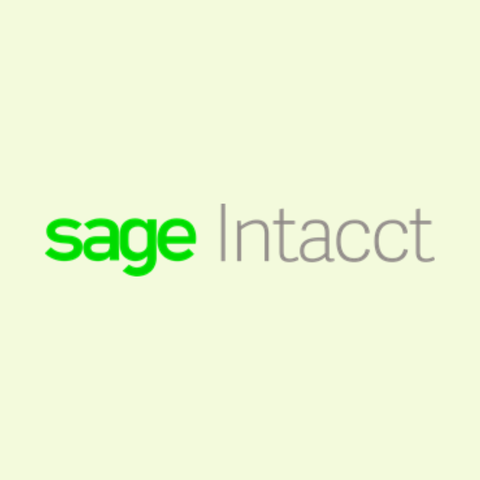
Sage Intacct
Advanced Accounting for Enterprise
- Core FunctionalityGeneral Accounting
- AI-PoweredYes
About Sage Intacct
Sage Intacct is HIPAA-compliant financial management software with integrated payroll and HR features. Powered by AI, it helps improve the accuracy of your business accounting process to ensure your real-time budget aligns with the one planned. With multi-entity accounting and powerful reporting capabilities, Sage provides thorough visibility into the organization’s financial operations.
Sage Intacct is the only AICPA-recommended financial management solution, making it ideal for businesses looking for highly compliant finance and business accounting software.
Sage Intacct Features
AP and AR automation: Automate billing and invoicing workflows using Sage Intacct’s payment solutions.
Intelligent General Ledger: Implement continuous AI-powered accounting to get multi-dimensional insights and deep dive into transactions.
Financial planning: Budgeting software can use strategies like what-if scenario analysis, data visualization, rolling forecasting using financial models, and more.
Multi-entity management: Use one shared account to centralize financial management of multi-entity business processes for real-time visibility into inter-entity transactions. Generate aggregated and entity-level reports to track financial health across organizations.
Dashboards: Access 25+ data visualization types and 200+ pre-built interactive visuals to draw and share insights into your company’s finances.
Sage Intacct Pros/Cons
Allows multi-currency billing and payments.
Sage Intacct Marketplace provides access to 350+ software integrations across CRM, accounting, budgeting, point-of-sale, etc.
Sage AI Copilot helps capture more billable hours and find transactional errors to enable continuous accounting.
Robust security and compliance features help companies stay secure and audit-ready.
Has a learning curve and requires investment in assistance to set it up.
Does not provide a mobile app for on-the-go accounting.
Expensive for startups and small businesses.
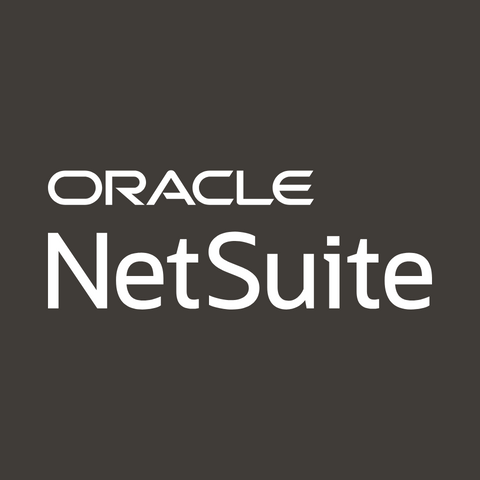
NetSuite ERP
Best ERP Solution for Global Enterprise
- Core FunctionalityCloud ERP
- AI-PoweredYes
About NetSuite ERP
NetSuite Enterprise Resource Planning (ERP) provides advanced financial management software that uses AI automation to reduce cycle times for financial closing, forecasting, accounting, and budgeting. It consolidates transactions across business processes, including accounts payable, accounts receivables, revenues, and assets. This consolidated data generates forecasts, reports, and budgets that align with your business goals.
For organizations seeking ERP systems, NetSuite ERP offers tools to manage complex financial tasks, adapt to changing business needs, and ensure accuracy in processes like billing, reporting, and compliance.
NetSuite ERP enables governance, risk, and compliance (GRC) programs. This makes it ideal for medium to large businesses looking for advanced accounting, audit trails, and compliance management software for their financial operations, especially in regulated industries.
NetSuite ERP Features
Business accounting: Automate manual processes across AP and AR, bank reconciliations, cash management, bookkeeping, etc. It also calculates financial performance metrics for fixed assets, taxes, cash flow, profitability, etc, to strategize for tax-saving opportunities.
Advanced billing: Allows highly customizable billing cycle automation. You can automate recurring subscriptions, implement promotions like volume discounts, provide custom rates, or generate bills for tiered pricing. Such advanced billing modes for managing subscriptions make it ideal for SaaS financial operations use cases.
Revenue recognition: Design revenue recognition workflows for your products and services to automate revenue scheduling and reporting. This helps navigate accounting due to complex customer contracts and recurring billing.
Financial reporting: Perform multi-dimensional analytics on your financial and operational data to generate reports for the overall financial picture and individual transactions.
Financial risk management: Sync any regulatory or taxation changes in real-time. Allows permissions and role-based access, real-time alerts of fraudulent activity, and audit trails.
NetSuite ERP Pros/Cons
Seamlessly connect with Oracle’s other product suites to manage inventory, eCommerce, HR, CRM, etc.
Allows advanced billing workflows to improve customer retention, such as consolidating multiple bills, auto-renewing, usage-based billing, and more.
Allows setting multiple books that adhere to different tax codes, reporting, and accounting standards for tax optimization.
In-depth and customizable reporting features.
Expensive for startups and small businesses.
Requires investing in implementation assistance due to the complicated setup process.
Steep learning curve, and users require training for optimal usage.
NetSuite ERP Pricing
NetSuite ERP provides an annual license whose total costs include a one-time implementation fee, core platform features, number of users, and optional modules chosen.

Certinia (FinancialForce)
Best for Salesforce Users
- Core FunctionalityCloud ERP
- AI-PoweredYes
About Certinia
Certinia offers a dedicated financial management system to unify your financial operations. This includes streamlining accounts receivables, providing insights to save procurement costs, automating billing, revenue management, and more.
Many service businesses operate with uncertainty, which makes cash management a guessing game. Certinia generates real-time lifecycle services forecasts and financial reports. This helps determine the effectiveness of your operations optimization efforts on your revenues and cash flow.
Certinia Features
Financial reports: AI models generate compliance and financial reports in real-time to track KPIs and optimize service operations.
Multi-everything: Certinia allows managing multiple entities across geographies, currencies, and languages using multiple books, charts, and bank reconciliations.
Billing: Implement your business model across subscriptions, product bundling, service pricing, usage-based billing, and more. Allows consolidating invoices, renewals, and analysis of financial KPIs using bills in a single platform.
Financial planning: Design dynamic budgets by using what-if scenario analysis and mass functions. Perform stress tests for service operations and create financial plans accordingly.
Revenue management: Recognize, centralize, track, and manage all your service revenue streams to get real-time insights on how you can achieve your revenue goals.
Certinia Pros/Cons
Integrated management solutions for customer relationships, sales, inventory, and employees help capture more data for better financial operations.
Multiple billing options and revenue recognition are useful features for service-based businesses.
Includes native Salesforce integration for streamlining CRM needs.
Users report a responsive and helpful customer team for software implementation and troubleshooting.
Certinia is built on the Salesforce platform – so if you’re not used to Salesforce, you may experience a learning curve.
Inadequate support resources and content for DIY troubleshooting or learning.
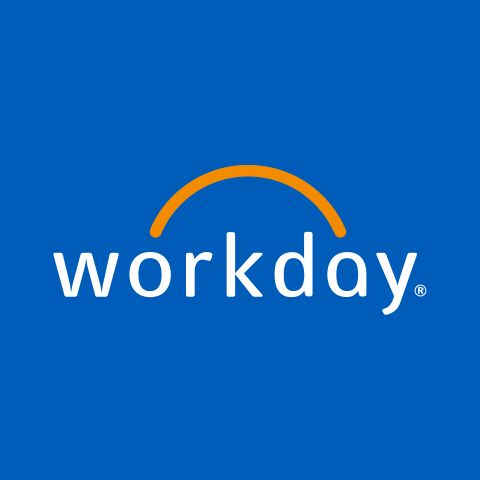
Workday
Best for Financial Planning
- Core FunctionalityFinancial Planning
- AI-PoweredYes
About Workday
Workday is an enterprise resource management platform integrated with AI-powered financial management solutions. It focuses on improving financial operations visibility via real-time reports and always-on auditing that deliver actionable insights for improving workflows. You can standardize business processes across all global entities for streamlined compliance management.
Workday offers unique solutions like grand management as part of its financial management software. If your business works in global government contracts, the public sector, non-profits, the education industry, compliance, or grants, Workday offers dedicated financial management tools.
Workday Features
Accounting Center: Helps track and consolidate all transactions across operations and the front office of multiple entities to streamline financial closing.
Financial audit trails: Workday promises proactive internal auditing for real-time insights on transactions, security, and workflow control. It includes custom reports with user permissions and roles for segregated views.
Spend management: Enterprise-grade and AI-powered expense reporting tools for simplifying accounting and timely reimbursements. Includes mobile app for expense submissions, risk reporting for unauthorized transactions, and Workday AI for receipt scanning.
Workday Illuminate: Speeds up tasks involved in financial operations using Generative AI like auto-filling details, detecting anomalies in transactions, document scanning, summarizing contracts, and more.
Workday Pros/Cons
Allows setting up complex ownership rules for financial closing calculations
Workday’s adaptable business process framework allows for agile finance operations and management.
Grant management features help with fundraising, ensure compliance, meet terms and conditions, record the use of funds, and more.
Exhaustive integration options with third-party software and Workday’s other business products for a unified approach.
Initial software setup and implementation are complex.
Users face a steep learning curve when operating the software.
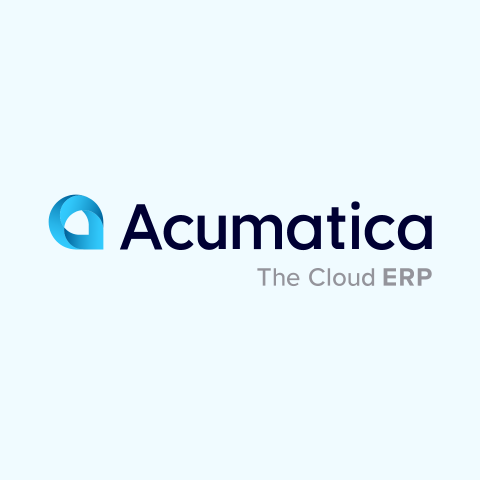
Acumatica
Cloud ERP Solution
- Core FunctionalityCloud ERP
- AI-PoweredYes
About Acumatica
Acumatica’s financial management software enables businesses to obtain a single source of truth for efficient and accurate financial planning and accounting. You can bring all your businesses across geographies, currencies, and nations into a single platform to streamline business accounting workflows. From accounts payable or receivable, deferred or recurring revenues to managing expenses, payroll, or fixed assets, Acumatica tracks transactions across business processes for centralized financial management.
Acumatica’s Cloud Enterprise Resource Planning (ERP) software provides dedicated features for currency management and inter-company accounting. It also offers dedicated features for the field services industry, such as construction, retail, manufacturing, etc. Thus, Acumatica is a good option for global companies looking for enterprise-grade financial management solutions.
Acumatica Features
Project accounting: Create budget reports, actual project costs, billing, estimations, quotes, and purchase orders for materials for strict budget control.
Revenue accounting: Get visibility to perform accounting on long-term and recurring contracts. This includes considering advanced revenues or deferred payments for custom durations or intervals.
Point of Sale (POS) connectors: Help handle offline transactions in field services like retail, capturing and recording transactions for streamlined cash management and reconciliation.
Bank feeds: Connects with 14,000+ financial institutions to accurately reconcile transactions across banks and credit cards. It also helps automatically place refunds based on adjustments made.
General ledger: Bring together transactions, assets, and liabilities from accounts payables and receivables, inventory, and fixed assets to instantly prepare balance sheets and financial statements.
Acumatica Pros/Cons
Allows access to unlimited users.
Provides POS, 135+ niche integrations, deferred revenue accounting, and tailored solutions for construction, retail, manufacturing, and professional services.
Software’s modular structure makes it customizable—for example, you can create custom pivot tables and views.
Due to limited low/no-code functionality, you require the assistance of professionals to set up, customize, and implement the software.
Users report poor customer support and inadequate software training provisions.
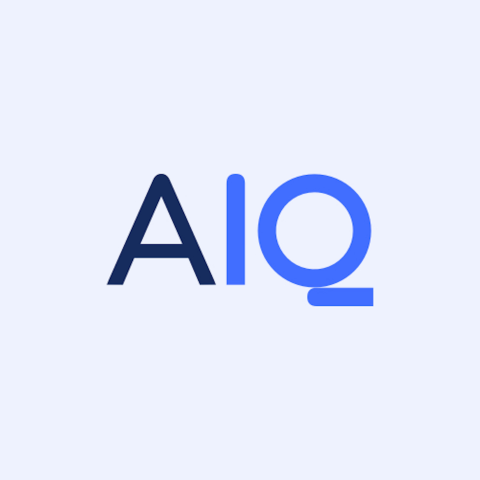
AccountsIQ
Best for Multi-Entity Accounting
- Core FunctionalityGeneral Accounting
- AI-PoweredNo
About AccountsIQ
AccountsIQ provides your company with a 6-dimensional business intelligence layer for your business accounting needs. This layer provides unique insights into your financial operations to help optimize business processes for savings and efficiency. It is scalable, supporting multi-entity and multi-currency use cases with real-time visibility.
With highly configurable reporting and role-based dashboard capabilities, AccountsIQ is suitable financial management software for acquiring business insights for multi-entity organizations. Businesses can find ways to improve cash flows and reach their full potential across subsidiaries using this platform.
AccountsIQ Features
Financial consolidation: Consolidates financial data in real-time to provide company-wide view anytime without waiting for aggregating subsidiary data. It can manage complex arrangements of ownership and foreign currency automatically.
Integrated reports: Use 250+ pre-built financial reports and dashboards with editable parameters to get snapshots of your financial operations.
Tax and compliance: Allows profiting users to perform full VAT for single or multiple entities, add approval flows to automate batch payments, and more.
Business intelligence: Irrespective of your GL structure, AccountsIQ can provide intelligent insights into your business processes. It provides interactive tools like charts, KPI trend indicators, interconnected filters, and more to drill into the insights dynamically.
Cash flow forecasting: Manage transactions across accounts payable, fixed assets, and accounts receivable. Use this data to visualize and forecast cash flow in real-time.
AccountsIQ Pros/Cons
Users report satisfaction with the one-click consolidation feature and its effectiveness.
Dedicated BI tools help create exhaustive reports and dashboards.
Allows users to export records of transactions to PowerBI and Excel.
Users report a responsive and helpful customer support and implementation team.
Complicated setup and users are required to undertake training to use the software.
Lacks features like reviewing and drilling into consolidated balance sheets or checking balances owned between entities.
AccountsIQ Pricing
| AccountsIQ Plan | Monthly Pricing | Offerings |
|---|---|---|
| Essentials (AIQ1) | €199 | AP and AR automation, 3 level GL coding, reporting & dashboards, and mobile app |
| Growth (AIQ2) | €450 | Inter-company management, fixed asset register, single-currency consolidation, and PowerBI connector |
| Enterprise (AIQ3) | Custom | Multi-currency consolidation, account management, custom reporting, and integrations with API access |
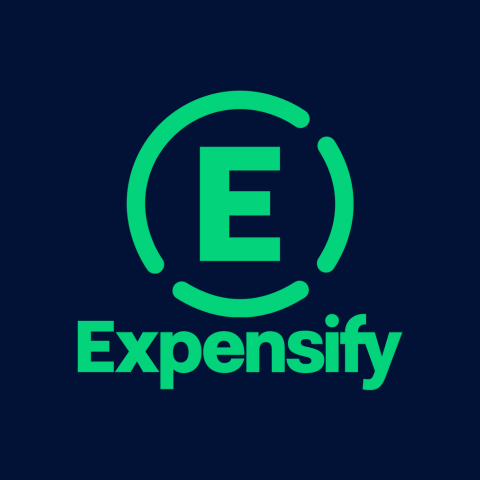
Expensify
Best for Expense Management
- Core FunctionalitySpend and Expense
- AI-poweredYes
About Expensify
Expensify provides finance management tools to streamline business accounting and personal finances. It focuses on ‘expense’ management workflows to facilitate the capture, accuracy, and automation of personal or company transactions. It includes processing these transactions for any reimbursements, implementing spending limits to control expenses, and generating reports to strategize cost savings.
Expensify helps with compliance – wherein you can detect duplicate receipts, sync exchange rates, and ensure transactions submitted adhere to the company’s spending policies. This makes Expensify a handy financial management tool to capture, manage, and process expense receipts, bills, and transactions.
Expensify Features
Receipt tracking: Smartscan supports 150+ currencies to capture every detail, categorize it, and auto-fill submission expense reports.
Expensify card: Assign the Expensify Visa Corporate Card to your employees to streamline expense tracking in real-time and implement spending limits to stay on budget.
Pay bills: Automate and schedule your bill payments without incurring additional costs.
Invoice management: Automate the end-to-end invoicing process and process invoices for tax filing with a single click. Customers can chat with you for any invoice support they require.
Reports and insights: Analyze spending data from bills, receipts, card transactions, invoices, etc., to generate 32+ report types for your spending patterns.
Expensify Pros/Cons
Free plan for managing personal finance and expenses.
Provides unlimited virtual corporate cards with 2% cashback.
Includes dedicated features for travel expense management.
Allows global reimbursements in local currencies to employees across 190+ countries.
Email integration to capture and record expenses directly from emails.
No dedicated business accounting features – you are required to invest in additional accounting software to integrate captured spend management data.
Occasional bugs and incorrect values were recorded during receipt scanning.
Expensify Pricing
| Expensify Plan | Monthly Pricing (per user) | Offerings |
|---|---|---|
| Free (Individuals) | $0 | Send and receive payments, bill splitting, chat, up to 25 SmartScans per month. |
| Collect | $5 | Unlimited SmartScans, bill payments, invoicing, and Expensify cards. |
| Control | $9 | Admin controls, budgeting, custom reporting, SAML/SSO functionality. |
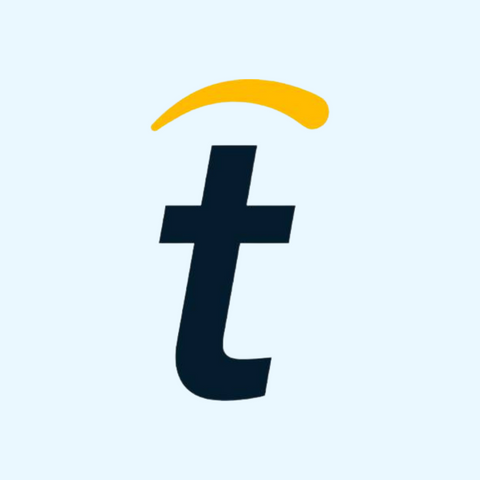
Tipalti
Best for Accounts Payable Automation
- Core FunctionalityAP Automation
- AI-PoweredYes
About Tipalti
Tipalti provides advanced finance management tools to automate payments across complete procurement and expense management processes. This includes mass payments and tax management at a global scale for both employees and contractors in your multi-entity organization. For a risk-free experience, it offers enterprise-grade security with built-in OFAC screening to prevent fraudulent transactions.
Tipalti is a great choice for multi-entity organizations who want to automate their accounts payable for their global procurement operations.
Tipalti Features
Invoice automation: Use Tipalti’s Smart AI Scan feature to automatically capture and auto-fill invoice data. It uses Generative AI to code invoices and auto-generate purchase requests with the required information.
Automate approvals: Intelligently considers historical bills, invoices, and any supplier-specific rules to automatically approve or flag bills. It also assigns approved bills to the relevant approver for further processing.
Supplier portal: Manages payments, currencies, and taxation via a self-onboarding global supplier portal.
Multi-entity operations: Design fully connected entities with consolidated finance, procurement, and expense management visibility. It applies unique automation workflows and branding to streamline payments, reconcile transactions, and handle supplier communication, taxation, and compliances.
Corporate cards: Implement advanced spending limits as per your spending policies to control employees’ expenses. These digitized transactions streamline expense management by tracking receipts, performing reimbursements, and analyzing company spending patterns.
Tipalti Pros/Cons
Provides unlimited virtual corporate cards.
Being AI automation-enabled provides quality data and deeper insights into AP, bills, expenses, and supplier interactions.
Modern user interface that is easy to navigate.
Dedicated security features to facilitate global and mass payments.
Users report slow software.
It takes time to onboard supplier payees on the self-service supplier portal. This increases implementation time which can delay pending orders.
No provisions to perform partial payments – which can be a requirement to work with global suppliers.
Tipalti Pricing
Tipalti considers transaction volume, currency conversion rates, and additional features opted for to quote a final price.
| Tipalti Plan | Monthly Pricing | Offerings |
|---|---|---|
| Starter | $99 | AI smart scan to process invoices, domestic multi-entity support, approval flows, and supplier portal. |
| Premium | Custom | 2 and 3-way purchase order matching, global multi-entity support, mass payments. |
| Elite | Custom | Custom approval flows, Slack integration, and budget management. |

Causal
Offer Financial Forecasting and Scenario Planning
- Core FunctionalityFinancial Planning
- AI-PoweredYes
About Causal
Causal is a financial management software that enables businesses with advanced financial planning tools to align budgets and optimize them using forecasts. It enhances visibility into your finances with consolidated views. Using this, you can better optimize and generate forecasts of your financial operations via its scenario analysis, custom formula, and reporting tools.
Causal offers dedicated features to track and report SaaS metrics. You can create hiring plans and determine how each hired person affects your finances. Thus, Causal is great for companies looking to optimize their financial operations across business processes – including headcounts, revenues, all entities, performance metrics, etc.
Causal Features
Financial reports: Consolidate data from your CRM, HRIS, and accounting system and create multiple versions of custom reports. Use variance analysis to plan your company’s finances and compare with actual numbers.
Financial models: Prepare financial models to streamline complex scenarios that include multi-entities, products, geographies, etc. Then, create and compare scenarios to fine-tune your financial strategy, business accounting, and operational processes.
Collaborate: Share your financial models and reports with team members with custom views and permissions.
Budgeting: Connect directly with QuickBooks or Xero to pull historical data and use designed financial models for real-time budgeting and forecasts.
Enterprise-grade security: Implement admin-level control and role-based permissions. Causal maintains detailed audit trails that log user activity within the platform. It also encrypts data, enables you to use SAML/SSO, and is SOC2 certified.
Causal Pros/Cons
Provisions to consider hiring costs into financial planning – making it a useful finance management tool for large companies with global employees.
Dedicated features to track SaaS metrics for improved forecasts.
Users report the software is flexible, usable, and customizable for complex financial modeling.
You can only benefit from SaaS metrics features if you use Stripe for payments.
Limited supported integrations to capture data for financial planning.
What is Financial Management Software?
Financial management software digitizes financial operations to gain visibility into all transactions across business processes. The finance team gains insights into the company’s cash flow and profitability using this data. Then, it optimizes these processes to reduce costs and improve savings via budgeting, forecasting, tax planning, expense management, payroll, and more.
Advanced financial management software uses AI and ML algorithms to design unique financial models for complex and large company structures.
Here are typical features an effective financial management software must provide:
- AP and AR automation: Many tasks in the accounts payable and receivable workflows are repetitive. Using automation, one ensures every transaction across business processes gets recorded and processed for accurate accounting.
- Invoice management: Free up your finance team by automating the complete invoice-to-pay workflow across creation, payments, follow-up, and close.
- Security: should provide enterprise-grade security to scale financial planning, automation, payments, and management across global subsidiaries.
- Insights: Helps design and implement complex financial models for budgeting, forecasting, and reporting to improve finance management strategy.
- Mobile app: Helps capture expenses, approve transactions, and track real-time financial reports to make quick decisions.
- Integrations: Provide direct integrations with CRM, HRIS, ERP, and other business tools, as well as API access for custom integrations for seamless data flow.
What are the Benefits of Financial Management Software?
The benefits of financial management software are as follows:
Improved Financial Accuracy
Finance management tools capture and process transactions in real-time and enter this data automatically using integrations or AI. This ensures your business with accurate numbers to create balance sheets and reports.
Save Time
Automate repetitive and manual workflows across invoicing, billing, data entry, reconciliation, payroll, etc. Your finance teams can use this additional time for strategic tasks like preparing better financial plans or budgets.
Better Budgeting and Forecasting
Financial management software captures on-ground transactional activity in real-time and helps calculate real numbers. Then, it enables finance teams to design financial models that mimic your business operations to create accurate forecasts. This helps teams make operational changes to align business processes with actual budgets created.
Real-time Financial Insights
Real-time insights make your finance teams proactive such that you can align with designed budgets and meet forecasts before any derailment happens.
Financial management solutions like Xero, BILL, Sage Intacct, and AccountsIQ provide dedicated dashboard creation features to track key finance KPIs. These provide real-time insights to the financial manager to log in, check financial operations stats, align teams to meet budgets and continue optimizing them based on alerts shared by the software.
Streamlined Cash Flow Management
As your company continues to spend capital on its operations and investments, you can often lose sight of what’s available in the bank. Finance management software tracks AP, AR, and expenses in real-time to help determine cash flow and perform anything beyond the set budget. Integrating a spend management platform can further enhance these capabilities by providing information on spending patterns, enforcing budget controls, and optimizing procurement processes.
Reduced Costs and Improved Profitability
Manual financial management leads to unseen costs – like your accountant missing out on key transactions, which leads to incorrect tax calculations and, eventually, penalties from regulators.
Companies can uncover areas to cut expenses and increase profits using precise data analysis by financial management solutions.
Improved Financial Data Security
It’s easy to hack spreadsheets, and your financial data is a gold mine for hackers or competitors who want to make you go bust. Hence, it is critical to adopt finance management software with robust data security measures, such as access controls, encryption, etc.
For example, NetSuite ERP, Acumatica, Workday, BILL, Tipalti, and Causal provide enterprise-grade security for financial data. Such features are critical to safeguarding financial operations, especially for multi-entity businesses with global operations or highly regulated industries like healthcare.
Simplified Financial Reporting and Analysis
Management always asks for proof to make uncomfortable operational changes – and that’s why reports become essential. Financial management software allows finance teams to back up their strategy with data and insights generated from actual financial data and models. It can generate error-free reports like profit and loss statements, cash flow summaries, or tax documents.
What is the Difference Between Financial Management and Accounting Software?
Here’s a quick comparison between financial management and accounting software.
| Comparison Criteria | Financial Management Software | Accounting Software |
|---|---|---|
| Purpose | Ensure compliance with desired accounting standards via tracking, recording, and processing all financial transactions across AP and AR. | Focus on financial planning and strategy to facilitate operational decisions for better revenues and business outcomes. |
| Focus Areas | Preparing budgets, generating forecasts, cash management, and financial reporting. | Complete financial picture of the company’s financial health, including key metrics for optimizing financial plans, budgets, and forecasts. |
| Planning, Strategy, Decision-Making | Focus on financial planning and strategy to facilitate operational decisions for better revenues and business outcomes. | Complete financial picture of the company’s financial health, including key metrics for optimizing financial plans, budgets, and forecasts. |
| Recording Transactions, Compliance | Includes compliance management, but the focus is more on achieving strategic financial goals while staying compliant. | Key emphasis on compliance – for which the software automates tracking transactions and updates calculations as per regulatory changes. |
| Features | Financial management tools for budgeting, risk analysis, reporting, performance dashboards, financial modeling, and cash flow forecasting. | Accounting tools like general ledger management, invoicing, tax management, compliance reporting, and expense management. |
| Reporting | Offers dynamic, real-time financial insights and custom reports for strategic financial evaluation. | Provides accounting-relevant reports, such as balance sheets, profit and loss statements, tax forms, spending analysis, etc. |
| User Type | CFOs and financial or business analysts. | Accountants and bookkeepers. |
| Scalability | Scalable for multi-entity financial organizations with global operations. | Enough for small businesses and startups to use accounting software to streamline their finances. |
| Integration Capabilities | The focus is to integrate with ERP, CRM, and BI tools for exhaustive financial management – more data translates to better financial planning. | Critical to integrate with software that involves financial transactions for seamless tracking and recording – like payment gateways, tax platforms, or inventory systems. |
Final Words
The answer to how your business will achieve its next stage of growth lies in your financial statements and forecasts.
A financial management software digitizes the financial operations to provide a real financial picture of your business. Knowing this, in real-time, will help you control your ambitions to prepare realistic growth plans that ensure comfortable cash flow levels.
Get proactive in making the right financial decisions that truly support your business and financial goals with our curated list of financial management software.
Explore more on Financial Management
-
 EditorRashmi Sharma is an editor at Geekflare. She is passionate about researching business resources and has an interest in data analysis.
EditorRashmi Sharma is an editor at Geekflare. She is passionate about researching business resources and has an interest in data analysis.


